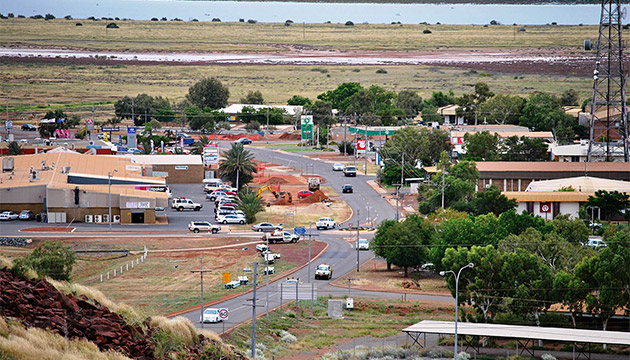Mining isn’t a dirty word in Karratha, a town that has the second-highest earnings in Australia and an enticing outdoors lifestyle.
Story By Chris Pritchard
Ochre-hued aridity encircles Karratha, WA, creating similar first impressions to other outback towns. But the differences are striking. For one thing, little is heard of crops, cattle or sheep. Instead, mining – and attendant prosperity – dominates. In mine-oriented towns such as Broken Hill, NSW, Kalgoorlie, WA, and Mount Isa, Qld, a balance is struck between the two. Not in Karratha.
“We’re ‘boat people’,” quips a resident, not using the moniker to describe undocumented arrivals in leaky boats, but to refer to Australia’s highest proportion of boat-owning residents. “Now we’re in Karratha, we’d better buy a boat,” newcomers commonly declare. Classified ads and notices fluttering from community boards confirm buoyant trade in boats and four-wheel-drives.
The source of Karratha’s wealth is its Pilbara backyard. This scenic slab of outback produces 95 percent of Australia’s iron ore, 70% of natural gas and 85% of crude oil and condensate. But Karratha isn’t a head-in-the-sand sort of place. Assessments that mining’s boom is over, flayed by sagging demand and falling prices, aren’t disputed. However, it won’t be the death of Karratha.
China and other buyers will still need outback minerals. New projects will begin, though at a less frenzied pace. This brake on rocketing prices is welcomed in a town where approvals to build have lately been worth $51 million monthly. John Lally, chief executive of Karratha District Chamber of Commerce, sees it this way: “Prices are levelling. More houses are coming onto the market.” One reason for this is that some redundant miners are heading south.
Garrett Prendiville, acting general manager of the Karratha International Hotel, says perceptions of high living costs are exaggerated. “Perth is now more expensive than Karratha,” he says. “We sell weekend rooms for $249 a night including hot breakfasts, Margaret River wine and other add-ons – and we’re the most expensive. Rates are more affordable than they’ve been for 10 years.”
Nonetheless, preconceptions aren’t easily shaken. Barry Harris, manager of Karratha Visitor Centre, admits they make his region a hard sell. Some dismiss Karratha as a poor-value mining town. “But there’s more than just resources,” he argues, labelling it a “perfect base” for exploring attractions such as a lush tropical oddity (fed by subterranean water) called Millstream Chichester National Park, the gorgeous gorges of the Pilbara’s Karijini National Park and Dampier Archipelago’s isles.
This story excerpt is from Issue #89
Outback Magazine: June/July 2013










